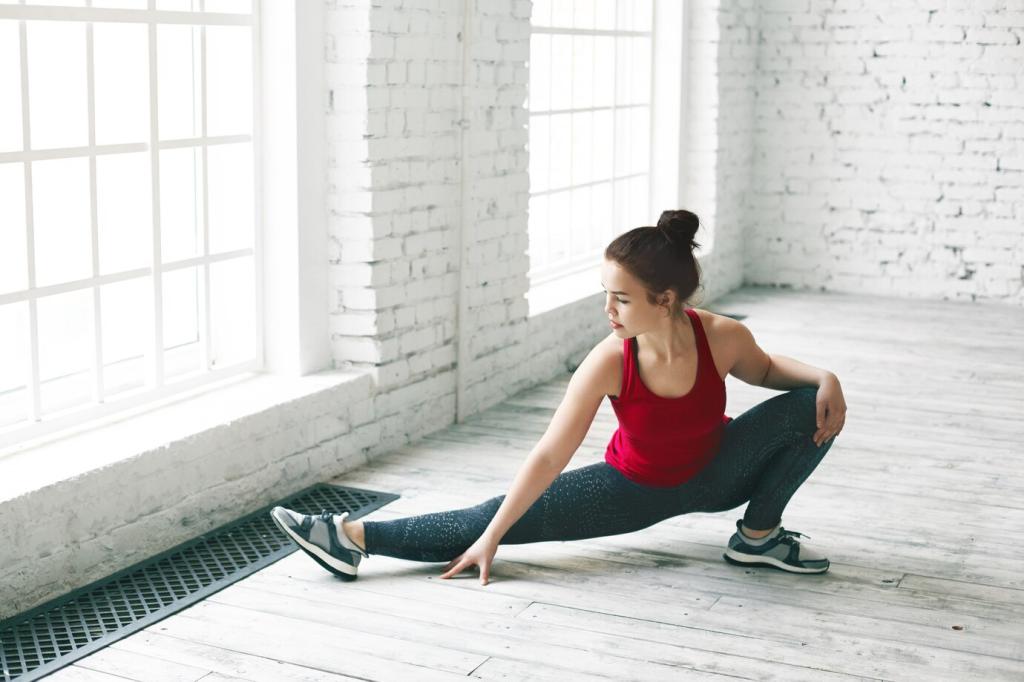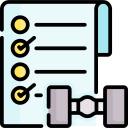30-Minute Home Workout Plan for Beginners
Your First 30 Minutes: A Simple Structure That Works
What You Need (Almost Nothing)
Clear a mat-sized space, grab water, and, if available, a chair and a towel. No weights required. Your body is the equipment. Silence notifications, set a timer, and promise yourself you’ll show up for just thirty minutes.
The 5–20–5 Framework
Start with five minutes of mobility and light activation, then twenty minutes of gentle circuits, finishing with five minutes of stretching and breathing. This flow warms tissues, builds strength and stamina, and helps you recover better afterward.
Make It Yours, Not Perfect
Modify reps, switch moves, or extend rests without guilt. Beginner success is about showing up, not crushing records. Comment with your favorite modification so others starting their 30-minute home workout plan for beginners can learn from you.
Five-Minute Warm-Up That Primes Your Body
Gentle Mobility Flow
Begin with neck rolls, shoulder circles, and spine twists. Add hip circles, knee bends, and ankle rocks. Move slowly and breathe steadily. Focus on range of motion, not speed, inviting your body to wake up without pressure.
Activate, Don’t Exhaust
March in place, do light arm swings, then easy side steps. Sprinkle in heel-to-toe rolls and a few glute squeezes. You should feel warmer and looser, not winded. Save energy for the main 20-minute circuit ahead.
A Warm-Up Playlist That Nudges You Forward
Pick two upbeat tracks that make you smile. Music reduces perceived effort and sets rhythm for movement. Share your warm-up songs in the comments so our beginner community can build a motivating playlist together.
The Beginner-Friendly 20-Minute Circuit
Bodyweight squats to a chair, wall push-ups, and glute bridges, followed by dead bug core taps. Move deliberately. Keep knees tracking over toes, wrists aligned under shoulders, and hips lifting with control to engage your glutes safely.
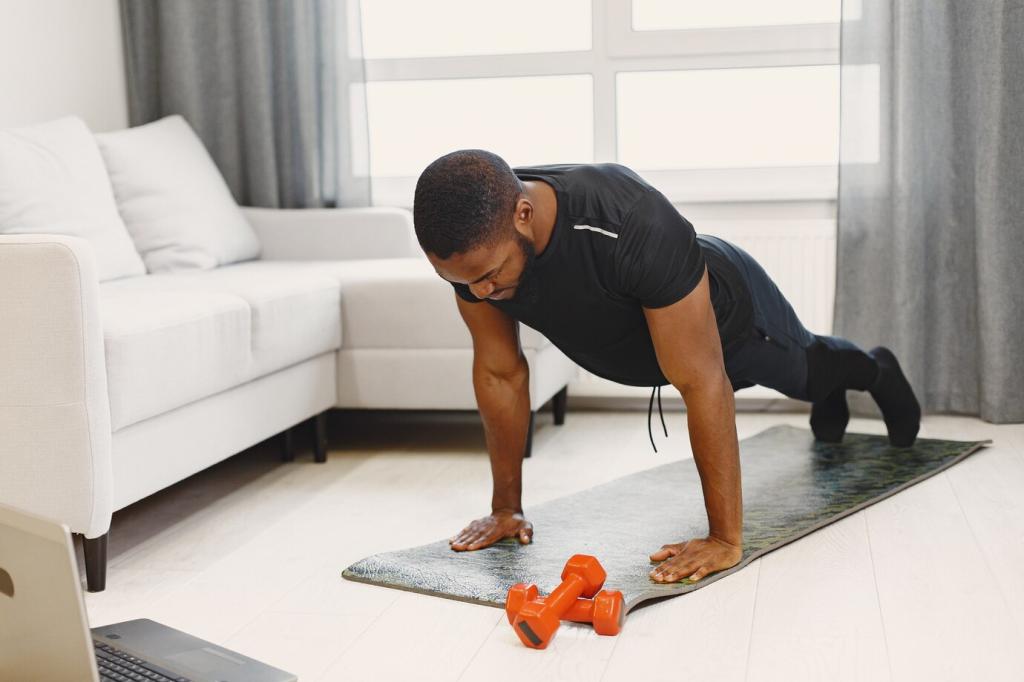
The Beginner-Friendly 20-Minute Circuit
Reverse lunges holding a chair, plank on knees, bird-dog, and standing calf raises. Stay tall through your torso. Think long spine, light hands on support, and steady inhales to keep wobble from turning into strain.
Low-Impact and Space-Saving Modifications
Use a folded towel under knees, press into a wall for push-up variations, and limit squat depth to pain-free ranges. Choose controlled tempos. If anything pinches or burns sharply, stop, reset posture, and scale movement thoughtfully.
Swap traveling lunges for stationary split squats. Replace jumping with rhythmic reaches and step-outs. Keep your mat perpendicular to furniture for safe clearance. Vertical moves like wall slides and calf raises save space while challenging stability.
Increase work intervals by five seconds, add a backpack with books for resistance, or elevate push-ups to the kitchen counter. Progress one variable at a time. Tell us in the comments which change made your session feel exciting again.
Form and Safety Essentials for Beginners
Inhale on easier phases, exhale on exertion. For squats, inhale down, exhale up. For push-ups, inhale as you lower, exhale as you press. Rhythmic breathing stabilizes your core and keeps your heart rate manageable.
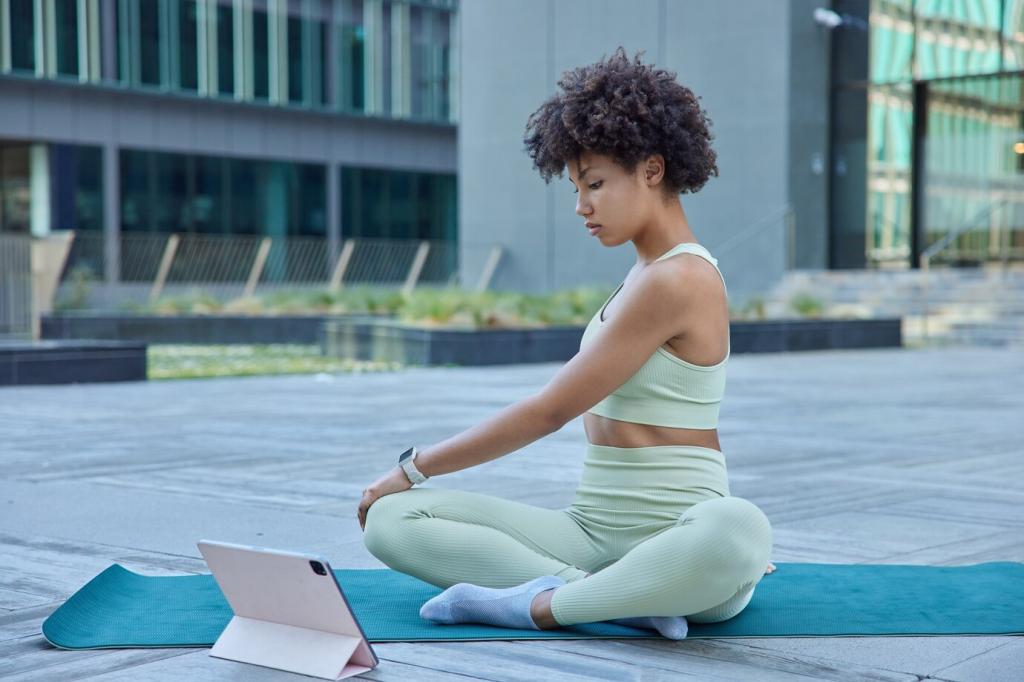
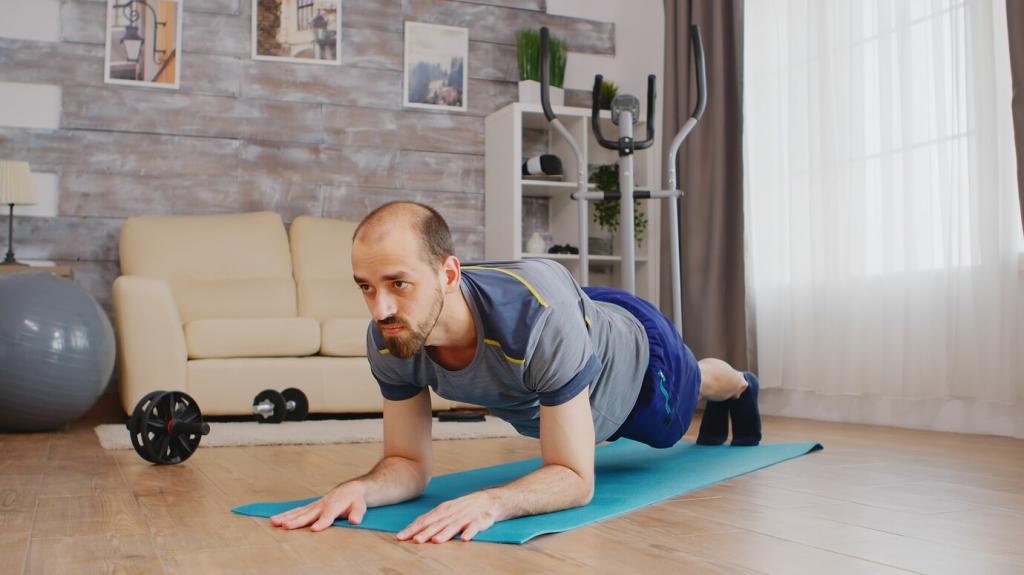
Five-Minute Cooldown and Recovery Ritual
Hold gentle stretches for hips, chest, calves, and hamstrings, twenty to thirty seconds each. Keep breathing smooth. Avoid bouncing. Ease into tension until it softens. Picture warmth spreading across tight spots as your heart rate settles.
Five-Minute Cooldown and Recovery Ritual
Try box breathing: inhale four, hold four, exhale four, hold four, repeated three rounds. This technique reduces stress, steadies your mind, and signals recovery, making your 30-minute home workout for beginners feel complete and grounded.
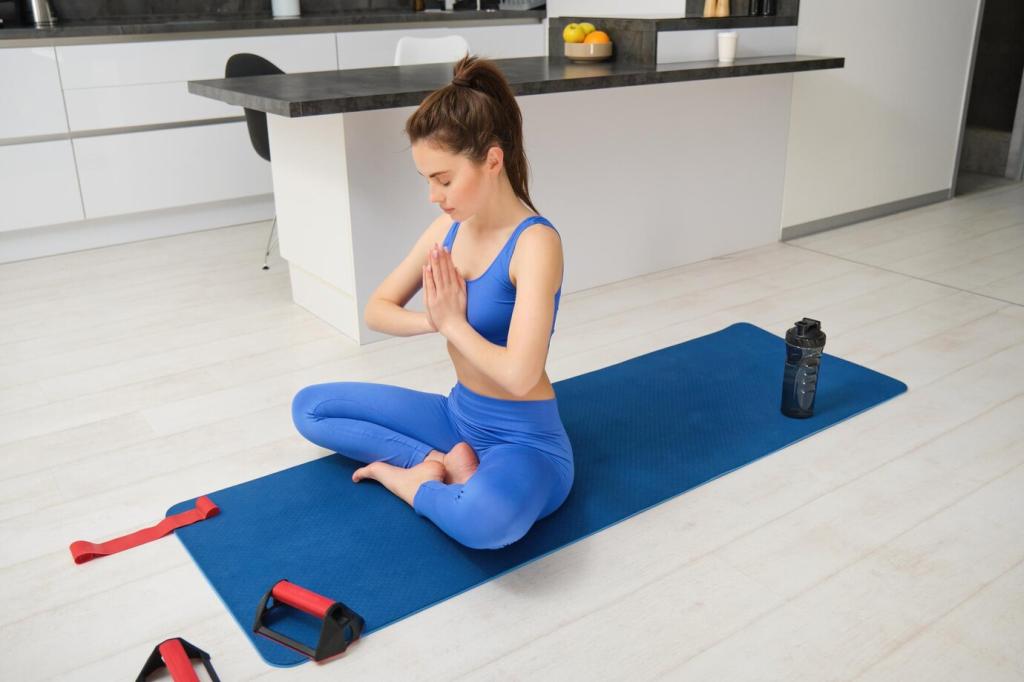
Alex’s 30-Minute Turnaround
Alex started with chair squats and wall push-ups, barely finishing round two. After two weeks, energy improved, sleep deepened, and confidence soared. Share your first-week story to encourage the next beginner pressing play today.
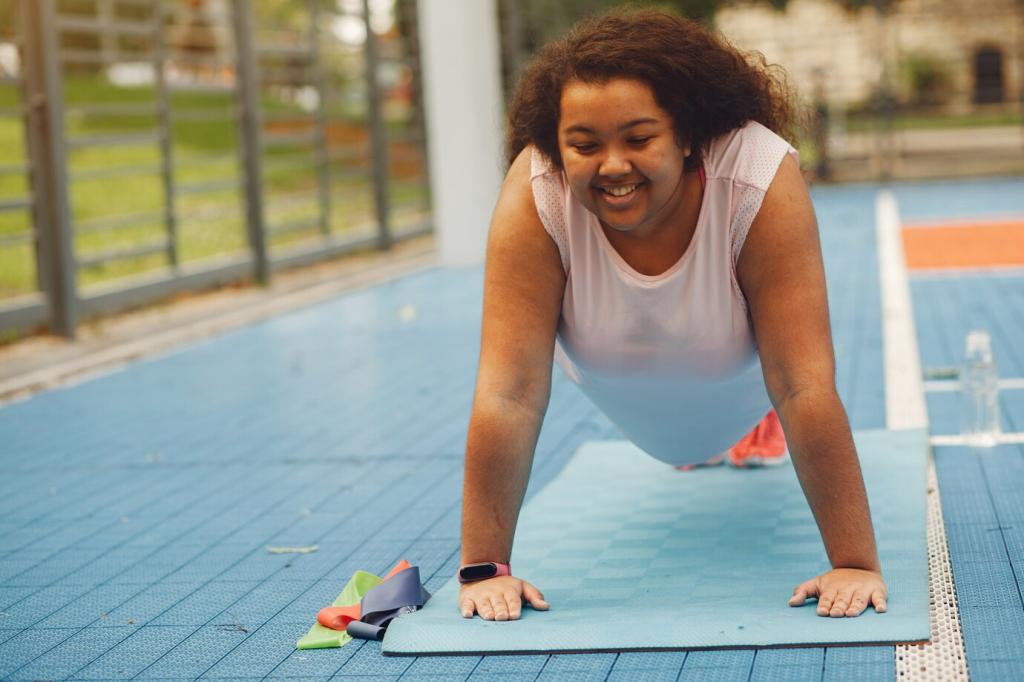
Habit Hooks and Triggers
Pair your session with an existing routine: after morning coffee or right after work. Lay out your mat beforehand. Keep cues visible. When the trigger happens, start immediately. Comment your chosen hook to inspire other new starters.
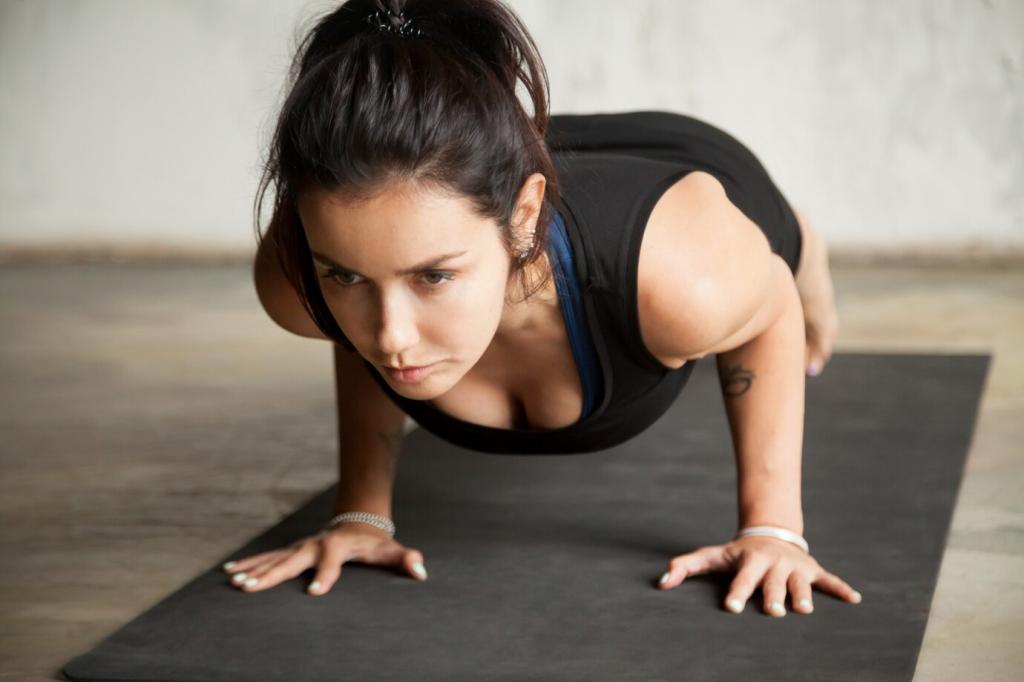
Celebrate Micro-Progress
Track one small win daily: steadier balance, easier breathing, or one extra rep. Celebrating tiny changes rewires your brain for consistency. Post your win below and subscribe for weekly beginner-friendly 30-minute plans and gentle challenges.
Track, Share, and Keep Showing Up
Record minutes completed and perceived effort from one to ten. That quick snapshot reveals trends without overwhelming details. Over time, you’ll see stamina rising and effort dropping at the same pace, a powerful beginner milestone.
